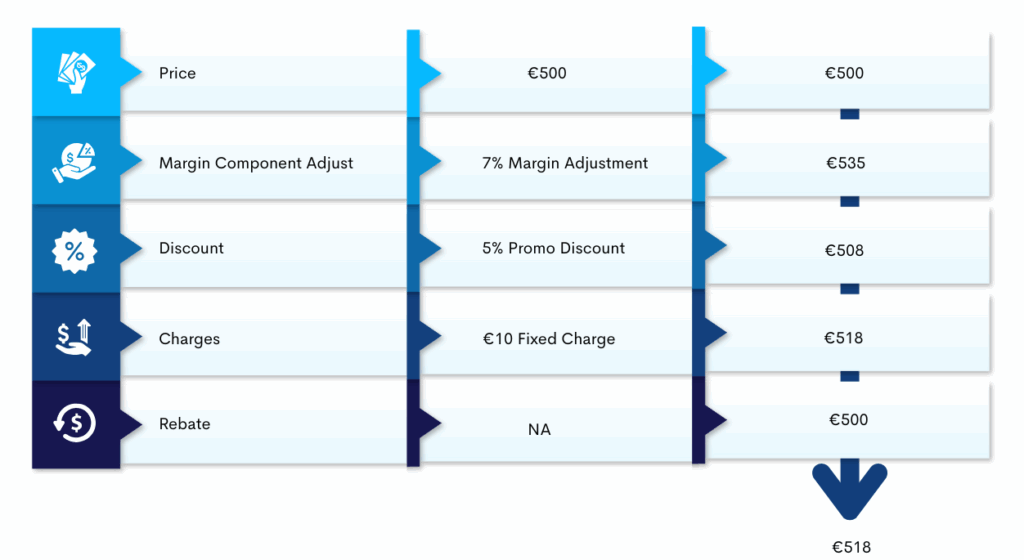- Lavelle Road, Bangalore
- contact@basofa.com

Introduction: The Real Cost of Inconsistent Pricing
In today’s competitive market, pricing is more than just a number – it’s a strategy. Whether you’re a retailer, distributor, wholesaler, or manufacturer, your pricing model can either build customer trust or break it down.
The challenge? Most businesses still juggle multiple systems for pricing – one for ERP, another for e-commerce, and separate manual methods for promotions or discounts. This results in mismatched prices, slow updates, and lost margin opportunities.
Unified Pricing Management in D365 changes the game by merging attribute-based pricing with SCM pricing management and Commerce discounting into one powerful framework.
Core Capabilities
Unified Pricing Management enables you to:
• Integrate SCM pricing with Commerce discounts into one central engine.
• Use attribute-based pricing (brand, size, region, customer segment, delivery mode, etc).
• Build flexible price structures using base price, margin adjustments, discounts, charges, and rebates.
• Automate regional & segment-specific pricing without hundreds of trade agreement lines.
• Launch omnichannel promotions across POS, e-commerce, and mobile apps in one go.
• Use price trees to manage multiple pricing strategies.

Use Cases
To make things easier to understand, let’s walk through a few sample case studies based on common business scenarios.
BASOFA Contoso has been a value retail business name in Western Europe for over two decades. Started as a small retail store in London grew into a multi-segment powerhouse serving customers across Denmark, Sweden, Norway, and Germany.
Today, BASOFA Contoso operates four interconnected business arms:
1) Retail arm – A chain of physical stores and a thriving online shop serving everyday consumers.
2) Distribution network – Regional distributors catering to hotels, restaurants, and corporate clients.
3) Wholesale unit -Supplying bulk orders to contractors, builders, and independent retailers.
BASOFA Contoso were struggling with:
1) Inconsistent pricing between POS in-store systems, the e-commerce platform, and distributor channels.
2) Regional price variations that were slow to implement and hard to maintain.
3) Promotions and discounts handled manually for different customer tiers, often causing overlap and errors.
4) No unified margin control when raw material costs shifted – leading to delayed reactions and profit loss.
5) Seasonal campaigns that took weeks to roll out across all channels, missing key sales windows.
Unified Pricing in Action: Solving the Challenges
Let’s explore how Unified Pricing is addressing the challenges.
1) Retail Omnichannel
During the holiday season, Northern customers kept asking why store promotions didn’t match what they saw online.
For example, a “Buy 1 iPhone 128GB, Get 1 Adidas T-Shirt Free” campaign was running in a few flagship stores, but online shoppers in the same region couldn’t access it. The inconsistency frustrated loyal customers and even led to complaints on social media.
With Unified Pricing in D365, the promotion was configured with clear attributes:
• Product: iPhone 128GB
• Free Item: Adidas T-Shirt
• Region: Northern customers only
• Channels: Store POS, E-commerce, Call Center
Now, every Northern region customer enjoys the same offer across all touchpoints.
• A customer buying in Stockholm store gets the T-shirt instantly.
• An online buyer in Gothenburg sees the free T-shirt auto added to the cart.
• Even a call center agent booking an iPhone order for a Northern customer gets the same promo applied.
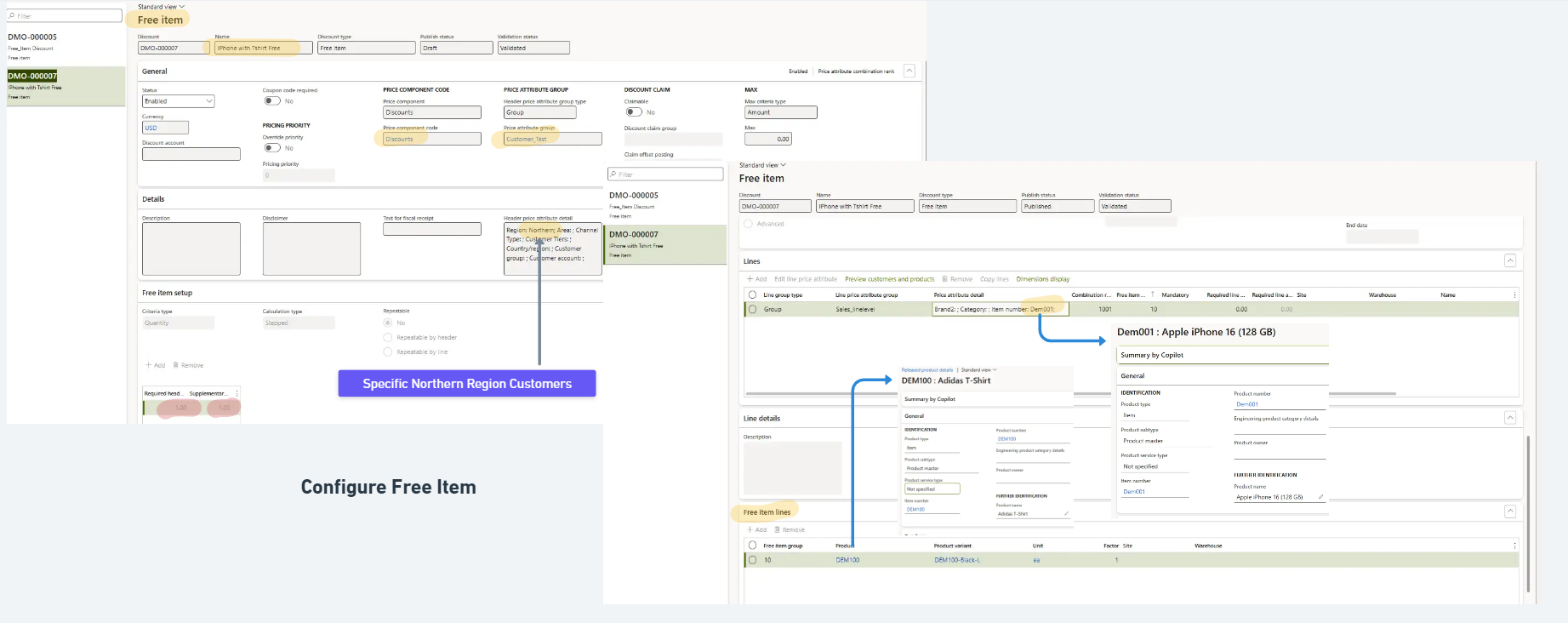
2) Distribution Scenario
BASOFA Contoso’s distribution network supplies furniture across Northern Europe.
To support rural development, the company introduced an initiative: rural hotels and restaurants in Northern Europe would receive an extra 10% discount compared to urban customers.
But the execution was messy – staff had to manually apply the rural discount, and mistakes were common. For example, rural hotels in Norway were sometimes billed at urban Denmark slab rates, creating disputes and undercutting the goodwill of the initiative.
With Unified Pricing in D365, BASOFA Contoso automated these rules:
• Urban regions (Sweden, Lativa): Standard slab rates applied.
• Rural regions (Norway countryside, Northern Denmark): Extra 10% rural support discount applied automatically at order creation.

3) Wholesale
A wholesaler in Denmark regularly ordered bulk quantities of packaged goods from BASOFA Contoso. Discounts were based on order value — €5,000=7% off, €10,000=20% off.
• User had to manage different price lists for wholesalers vs. retailers because D365 trade agreements don’t natively separate attributes like Customer Type.
With attribute-driven pricing rules in Unified Pricing:
• The Customer Attribute = Wholesaler was linked to the threshold discount rule.
• If a wholesaler’s order exceeded €5,000, the system auto-applied 7% off.
• If the same wholesaler’s order exceeded €10,000, the discount updated to 20% off.
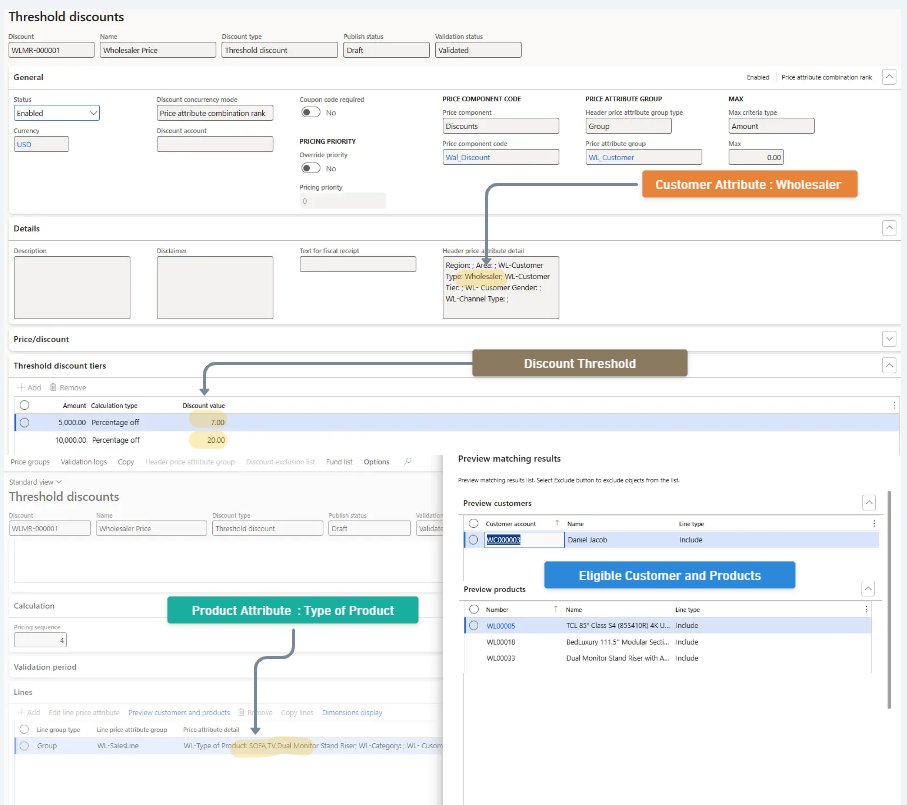
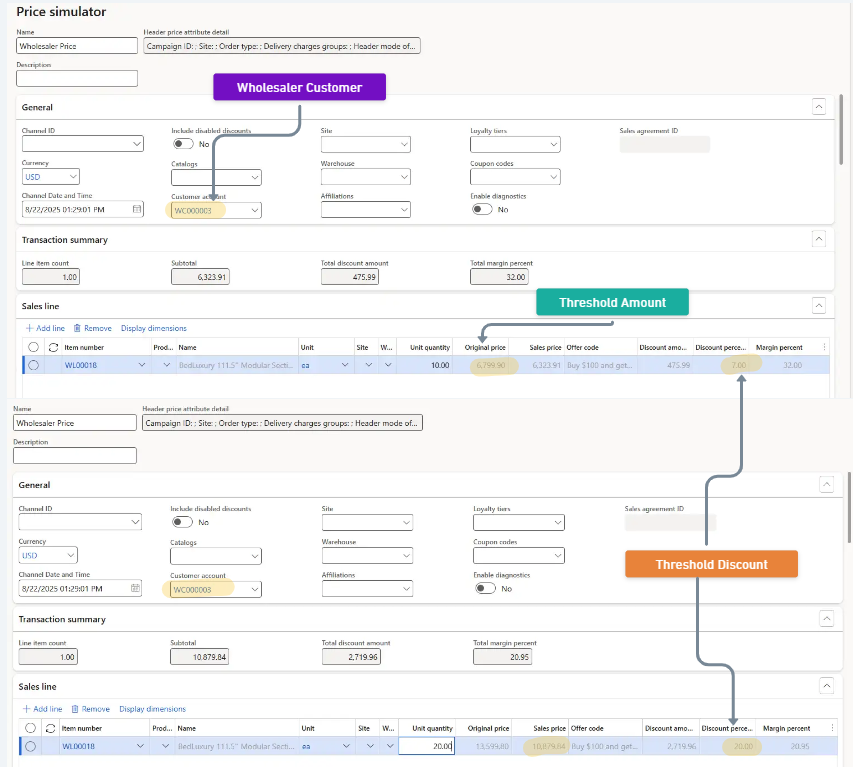
4) Manufacturer Margin Protection
When the cost of imported raw materials rose by 20%, it took BASOFA Contoso nearly two weeks to update distributor price lists, leading to lost profit.
With the Pricing Tree, new costs instantly recalculated prices for every affected partner and product.

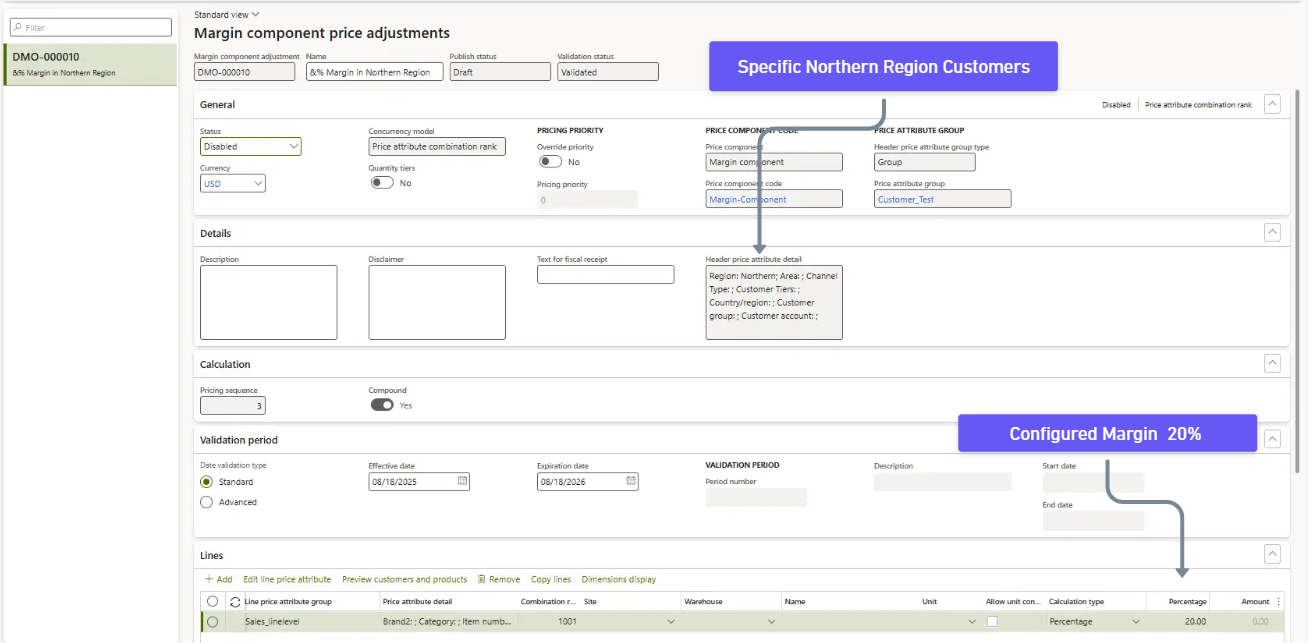


The Results
Since moving to Unified Pricing in D365, BASOFA Contoso has:
• Achieved 100% pricing consistency across all channels.
• Cut campaign rollout times from 3 days to just a few hours.
• Gained automatic compliance with contractual and regional pricing rules.
• Improved margin control with real-time price adjustment capabilities.

